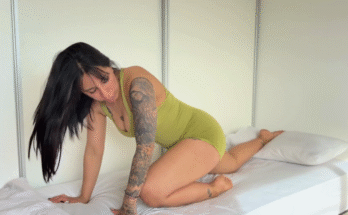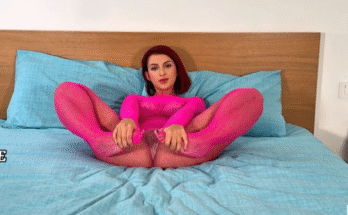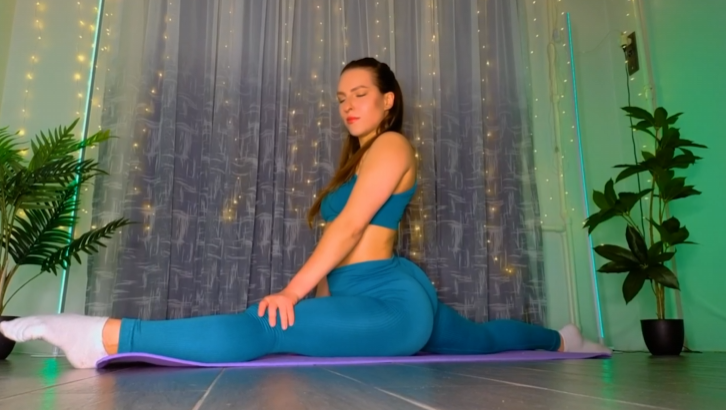
In a world that moves faster every day, where messages never stop buzzing and responsibilities stack endlessly, there comes a moment when the body whispers for gentleness. A moment when the mind craves silence more than stimulation. And for many, that moment happens quietly—early in the morning, late at night, or in the little space between tasks—when they roll out a mat, soften their breath, and surrender to the deep peace found in Slow Flow Yoga.
This practice is not about intensity or speed. It’s not about burning calories or mastering difficult poses. Instead, it is about connection, about tuning in to the subtleties of breath and movement, about easing into presence one inhale at a time. Slow Flow Yoga is a reminder that the body knows how to heal, how to open, how to guide—when we simply listen.
On this particular day, the room was quiet and gently lit. A warm glow filled the space, and the air felt fresh, as though every molecule invited calmness. The mat lay open like a soft invitation, calling not for effort but for awareness.
The session began in Child’s Pose, one of the most grounding positions in yoga. Knees wide, forehead resting softly on the mat, arms stretched forward, the body melted downward in surrender. Here, in this simple posture, the breath could expand fully. The back of the ribs lifted with each inhale, and the hips softened with every exhale. The world outside faded for a moment, replaced by the intimate symphony of breath.
Slowly, on an inhale, the body rose into a gentle Tabletop Position. Wrists aligned under shoulders, knees under hips. The spine lengthened effortlessly, ready for movement.
The practice flowed into Cat-Cow, a classic but powerful combination. With each inhale, the belly dropped, and the heart lifted in Cow. With each exhale, the spine rounded into Cat, releasing tension trapped between the shoulder blades. This slow rolling of the spine was not rushed; it was mindful, almost meditative, awakening each vertebra with warm, gentle attention.

After several rounds, the flow transitioned into a slow-moving Downward Dog, where the body lifted into an inverted V-shape. Heels reached toward the floor—not necessarily touching—while the spine lengthened beautifully. A gentle pedal through the feet awakened the hamstrings and calves, each movement soft and rhythmic. The shoulders relaxed as the head hung heavy, and the mind quieted with the breath.
From Downward Dog, the right foot slowly stepped forward into a Low Lunge. Unlike faster flows, there was no rush. The body eased into the pose, allowing the hip flexors to open gradually. The hands rested lightly on the mat or lifted onto the thigh. Breath flowed into the space below the ribs, expanding the chest. The gaze softened. In this slow pace, even a simple lunge felt transformational.
With the next inhalation, the torso rose into Crescent Lunge. The arms floated upward effortlessly, as though lifted by breath alone. The spine lengthened, the chest expanded, and the body found grounding through the legs. Holding the pose, the practitioner focused not on strength but on softness—soft shoulders, soft breath, soft presence. This was not about perfection; it was about feeling.
On an exhale, the arms lowered, and the flow shifted into Half Split, stretching the hamstring gently. The front leg extended, toes lifting toward the face, and the torso folded forward naturally. The stretch was deep yet calming, pulling tension from the back of the leg and releasing hidden tightness. Breath guided the depth—not force.
Switching sides brought balance, each movement mirroring the other with the same mindful rhythm. The body felt warmer now, more open, more receptive.
The practice then flowed into Standing Forward Fold. The head hung heavy, the arms dangled like soft ropes, and the spine released downward. With each inhale, the torso lifted slightly; with each exhale, it folded deeper. The hamstrings lengthened naturally, without pressure. The nervous system calmed.
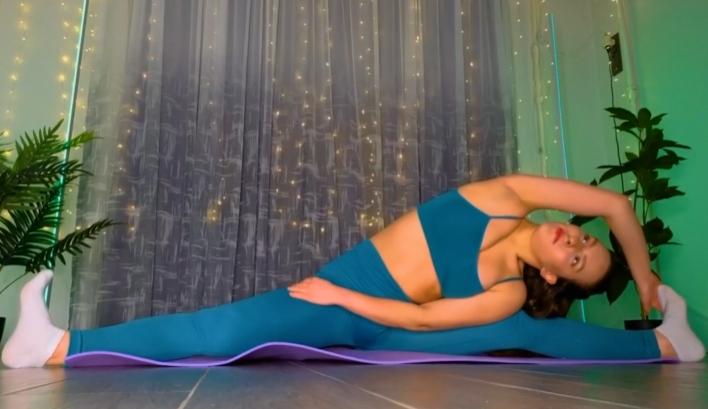
Slowly, vertebra by vertebra, the body rose into Mountain Pose. Feet grounded, spine long, arms resting at the sides. This simple stance—still, strong, and present—embodied the essence of Slow Flow Yoga. Standing there, the practitioner felt rooted yet light, aware yet peaceful. The breath became the anchor.
From Mountain, the arms lifted slowly overhead into Upward Salute, then gracefully drifted open into a gentle Side Bend. First one side, then the other. The movements were smooth and fluid, like waves rolling through the torso. The ribs expanded, the waist opened, and the heart softened.
Next came Warrior II, a pose that brought strength without force. The front knee bent softly, the back leg grounded, arms extended like wings. The gaze focused over the front hand, steady but relaxed. Warrior II in Slow Flow felt empowering, yet it also reminded the body not to push, but to feel—to experience the posture with depth and ease rather than tension.
Flowing from Warrior II into Reverse Warrior, the side body stretched and blossomed open. The movement was like a gentle sigh, a release of pressure that the body didn’t realize it had been holding. In Reverse Warrior, the breath felt endless.
The sequence continued into Triangle Pose, where the body hinged sideways and lengthened from fingers to toes. The hamstrings engaged softly, the torso spiraled open, and the breath filled all the open spaces. Moving slowly into and out of the pose heightened awareness—every shift felt intentional.
After exploring both sides, the body returned to the mat for Seated Forward Fold, one of the most calming stretches for the nervous system. Legs extended, spine long, and torso draped gently over the thighs. The stretch released the entire back chain of the body, from calves to neck. Everything softened. Everything let go.
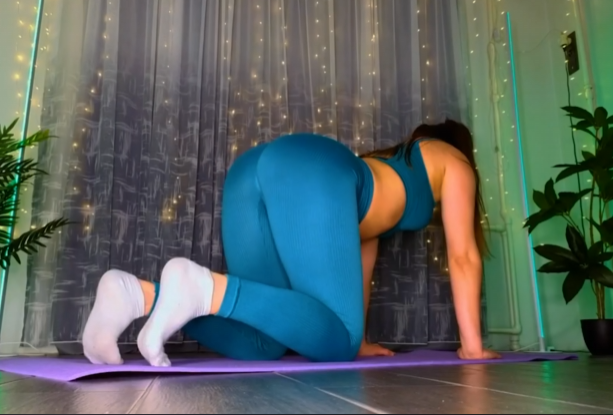
The session eased into a gentle Supine Twist, where the knees dropped to one side and then the other. Twists helped reset the spine and quiet the mind, like pressing a reset button for the entire body. With each rotation, stress melted deeper into the floor.
The practice ended with Savasana, the final resting pose. Lying flat on the back, arms open, legs relaxed, breath natural. In this silence, the body integrated everything—the breath, the movement, the stillness. The mind, once busy, now floated in calm. The heart beat steadily, softly.
Slow Flow Yoga was never about reaching the deepest stretch or perfecting any posture. It was about stepping into the present moment, feeling the body from the inside out, and quieting the constant chatter of the mind. It was a return home to oneself.
When the session ended, the world looked the same—but the practitioner no longer felt the same. The body felt lighter. The breath smoother. The mind clearer.
And in that softness, a quiet truth lingered:
When you slow down, you don’t lose time—you reclaim it.
Slow Flow Yoga lets you feel your body, quiet your mind, and open your heart.
